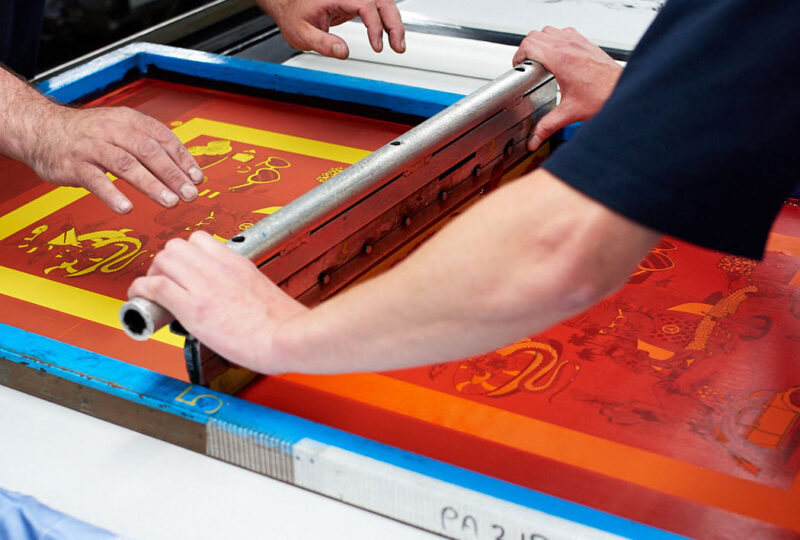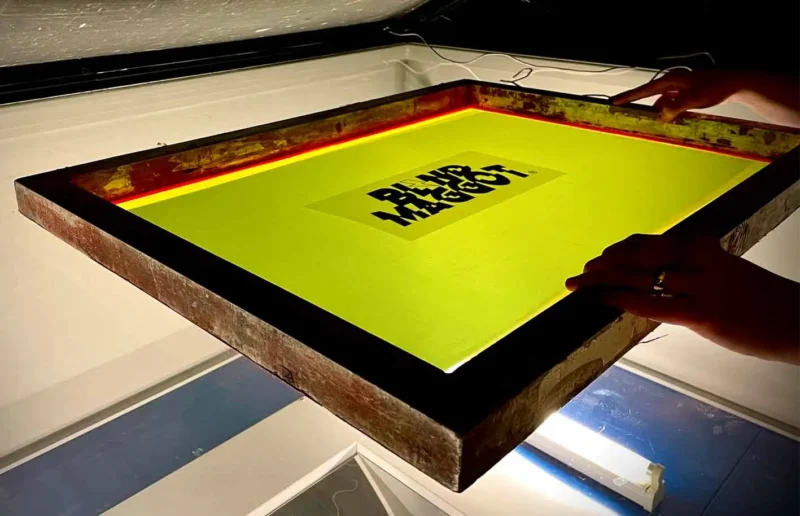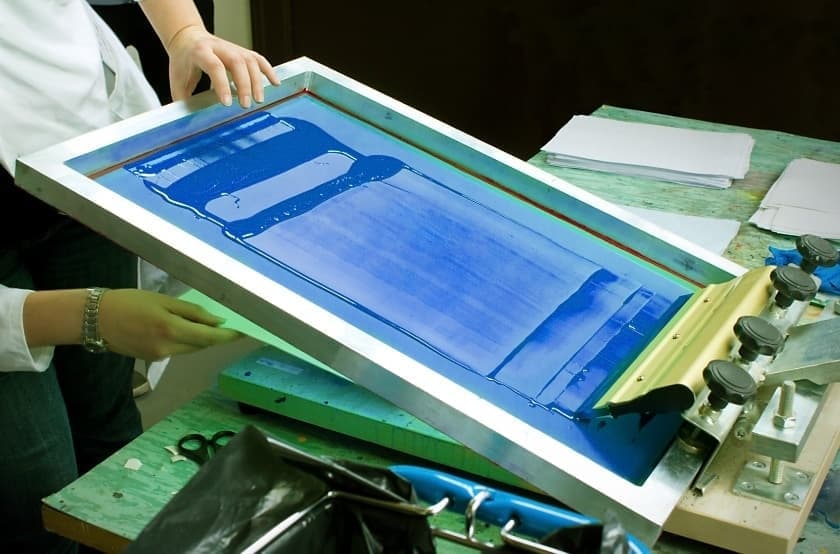The art of screen printing, sometimes referred to as silkscreening, dates back over a thousand years, yet its timeless appeal endures. This age-old technique, renowned for its versatility and durability, enables us to reproduce striking designs on various materials, from T-shirts and posters to ceramics and wood.
Today, as businesses strive to create unique branding elements and artists seek to express their creativity in innovative ways, the importance of cost-effective screen printing projects becomes increasingly paramount. Whether you’re an entrepreneur, a hobbyist, or a seasoned printmaker, your ultimate goal is to achieve superior print quality without breaking the bank.
Choosing the Right Screen Printing Materials

Selecting the right materials is the first critical step to economize your screen printing projects. Essentially, your toolkit should comprise screens, inks, and emulsions.
When it comes to screens, you’ll primarily encounter two types: synthetic (nylon or polyester) and metal (stainless steel). Although metal ones are more durable, they’re expensive upfront. In contrast, synthetic kinds, especially those made from polyester, deliver a balance between affordability and durability, making them a popular choice for cost-conscious printmakers.
The choice of ink depends on your printing substrate. Plastisol inks, the industry standard for textile printing, are affordable and easy to use, but water-based inks, though slightly pricier, offer softer prints and are more environmentally friendly. For top quality screen printing supplies you need to check this site.
Emulsions, used to transfer your design onto the screen, come in diazo, photopolymer, and dual-cure varieties. Diazo emulsions are the most cost-effective but require longer exposure times. Photopolymers, although pricier, expose faster and offer superior resolution. Choose an emulsion that aligns with your budget, its type, and exposure system.
Mastering Screen Preparation
Proper screen preparation is vital for the longevity of your screens and the quality of your prints. This process involves three key steps: degreasing, coating with emulsion, and drying.
Degreasing your screen with a dedicated degreaser or a mild dish soap removes contaminants that can interfere with emulsion adhesion, thus reducing potential print defects. Coating your screen with a thin, even layer of emulsion can extend its life and economize your emulsion usage.
After coating, allow it to dry in a clean, dust-free, and dark area to prevent premature exposure. A drying cabinet can speed up this process, but a simple, improvised setup in a dark room can work just as well.
Optimal Artwork Preparation
The key to efficient artwork preparation lies in simplicity. When creating your design, consider how many colors you’ll use. Each color requires a separate one, which can increase costs. Limiting your palette and strategically utilizing negative space can save on ink costs while still delivering impactful designs.
Vector-based artwork is the most suitable for screen printing, given its scalability without loss of resolution. Tools like Adobe Illustrator can help you produce high-quality vector designs.
Proper Screen Exposure Techniques

Screen exposure plays a vital role in defining the sharpness and detail of your prints. Underexposure or overexposure can lead to print defects, wasted inks, and reduced longevity.
To optimize screen exposure, invest in an exposure unit that matches your needs and budget. While commercial exposure units can be expensive, DIY setups involving UV lights or sunlight can be just as effective.
Control your exposure times according to the manufacturer’s guidelines for your emulsion. A step wedge or exposure calculator can help you fine-tune your times, enabling cost-effective, high-quality results.
Printing Press Setup and Calibration
Proper setup and calibration of your screen printing press can significantly reduce wasted prints and ink. First, ensure that yours is correctly tensioned and secured in the press. A wobbly or poorly tensioned screen can lead to misprints, requiring reprints that waste time and materials.
Secondly, your press should be properly calibrated. This includes squaring the screen to the pallet and ensuring the off-contact distance (the gap between it and the substrate when the screen is at rest) is optimal. These adjustments can dramatically improve print quality and consistency.
Efficient Ink Usage
Ink is an expense that can quickly add up in screen printing. Luckily, a few smart practices can help you manage your ink usage more efficiently.
Firstly, mix only the amount of ink you anticipate using for a particular run. This reduces waste and prevents leftover ink from drying out. Next, use a high-quality squeegee to ensure an even, controlled ink application.
Lastly, don’t forget to clean your screens thoroughly after each run. By doing so, you can recover unspent ink and keep it in prime condition for the next project.
Maximizing Screen Printing Output

To boost productivity in your screen printing projects, consider streamlining your processes. Planning your print run order, grouping designs by color, and creating an efficient print schedule can significantly minimize downtime.
Moreover, when planning large orders, the assembly line method can work wonders. This approach allows you to break down the process into manageable stages and can dramatically increase the number of items you print per hour.
Troubleshooting Common Screen Printing Issues
Understanding common screen printing issues and how to resolve them can save you both time and money. Whether it’s ink bleeding, image ghosting, or emulsion breakdown, being able to identify and troubleshoot these problems quickly and effectively can drastically reduce waste and frustration.
For instance, if your prints show signs of ink bleeding, consider using a thicker substrate or reducing the squeegee pressure. If you’re experiencing image ghosting, proper cleaning and reclaiming can help resolve this issue.
Embracing Automation and Technology
Automation and technology can make your screen printing process more efficient and cost-effective. Automatic presses, for instance, can significantly increase output, making them a worthy investment for larger operations.
In addition, software tools for design, color separation, and print management can streamline your workflow, saving time and reducing the risk of costly errors.
Reclamation and Reusability
One of the great things about screen printing is the ability to reclaim and reuse screens. This not only minimizes waste but also cuts down material costs.
To properly reclaim one, you’ll need to remove the ink, strip the emulsion, and degrease the screen. Investing in a high-quality emulsion remover and degreaser can prolong your screen’s life and keep your prints sharp and clean.
Marketing and Selling Your Screen Printed Products
Once your products are ready, effective marketing and sensible pricing are crucial for turning a profit. Use social media platforms to showcase your designs, and consider partnerships with local businesses to reach a wider audience.
When pricing your products, don’t just factor in material costs. Account for your time, overhead costs, and the value of your creative input. Strike a balance between competitive pricing and profitability.

